Photographs: Wikimedia Commons Smriti Talwar Chhabra
You love your pregnancy only if it is planned. Unplanned pregnancy is usually a stress. There are several birth control methods used by people for thousands of years. Weigh the pros and cons of each birth control method and choose the best one for you.
Here's a list.
Permanent methods: Most effective (99 per cent of the times they work)
1. Vasectomy
Vasectomy is a permanent form of birth control for men.
During vasectomy, tubes that carry sperms are closed or blocked. When the tubes are closed, sperm cannot leave a man's body and cause pregnancy. There are two methods of vasectomy -- incision and non-incision type.
Effectiveness
Vasectomy is the most effective birth control method. However, it is not immediately effective. Sperm remains beyond the blocked tubes. You must use other birth control methods until the sperms are used up. It usually takes about three months.
Who should not opt:
If you are not looking for a permanent solution vasectomy is not for you. Reversal is possible but without any guarantee and with risk associated.
If you are looking for protection against sexually transmitted diseases.

Courtesy: WelcomeLittle.com
Welcome Little is a programme specially designed for the expecting parents to prepare them for welcoming their little one
Top 12 birth control methods
Photographs: Flanker/ Wikimedia Commons
2. Female sterilisation
Sterilisation is also a permanent form of birth control method.
The women's fallopian tubes (connector between uterus and ovaries) are either cut or sealed. This ensures that the sperm does not reach the egg released by the ovaries.
Effectiveness
Usually this method is effective. However in very few cases the tubes can rejoin by themselves and pregnancy can happen in the fallopian tube (ectopic pregnancy). This could be life threatening if not diagnosed early.
Sterilisation does not change your hormones. The hormones that affect hair, voice, sex drive, muscle tone, and breast size, are still made in the ovaries. It will not cause symptoms of menopause or make menopause happen earlier. And most women who have been sterilised will still have normal periods.
Who should not opt:
- If you are not looking for a permanent solution sterilisation is not for you. Reversal is not possible and you can never have your biological children.
- If you are looking for protection against sexually transmitted diseases.
Top 12 birth control methods
Photographs: Paula Bronstein/Getty Images
3. Implant
This is the first non-surgical method of sterilising women.
A thin tube is used to thread a tiny spring-like device through the vagina and uterus into each fallopian tube. The device works by causing scar tissue to form around the coil. This blocks the fallopian tubes and stops the egg and sperm from joining. It can take about three months for the scar tissue to grow, so it's important to use another form of birth control during this time.
Effectiveness
The procedure is usually safe and secure however, there are certain risks associated with implants. Incorrect placement of the inserted device, incomplete blockage of tube, injury due to insert are few of them.
Who should not opt:
- If you are not looking for a permanent solution this is not for you. Reversal is not possible and you can never have your biological children.
- If you are looking for protection against sexually transmitted diseases.
Top 12 birth control methods
Photographs: ASwann/Wikimedia Commons
Implantable devices: Highly effective
4. IUD
IUD stand for "intrauterine device." IUDs are small, "T-shaped" devices made of flexible plastic that is placed in the uterus by a doctor. IUDs are of two types:
Copper IUD: It releases a small amount of copper into the uterus, which prevents the sperm from reaching and fertilising the egg. If fertilisation does occur, the IUD keeps the fertilised egg from implanting in the lining of the uterus. It can stay in your uterus for 5 to 10 years.
Hormonal IUD: It releases progestin into the uterus, which keeps the ovaries from releasing an egg and causes the cervical mucus to thicken so sperm can't reach the egg.
It also affects the ability of a fertilised egg to successfully implant in the uterus. It can stay in your uterus for up to five years.
Effectiveness
IUD is quite effective against pregnancy. You might have mild to moderate pain in uterus, irregular periods for few cycles, cramping and backache for few days.
Who should not opt:
- Women with pelvic infections
- Have untreated Cervical cancer or uterus cancer or breast cancer
- Have a uterine perforation during IUD insertion
- Have, or may have, an allergy to copper or have Wilson's Disease -- an inherited disease that blocks the body's ability to get rid of copper
- Have liver disease
Top 12 birth control methods
Photographs: Ceridwen/Wikimedia Commons
Hormonal methods: Moderately effective (2-9 per cent failure rate)
5. Pill
Birth control pills are to be taken everydar to prevent pregnancy. The pill contains the hormones estrogen and progestin. It is taken daily to keep the ovaries from releasing an egg.
The pill also causes changes in the lining of the uterus and the cervical mucus to keep the sperm from joining the egg.
Effectiveness
Birth control pills are very effective. Combination pills work best when taken every day at the same time. The pill may be slightly less effective for women who are very overweight. Vomiting and diarrhoea may also keep the pill from working.
Who should not opt:
- Those with uncontrolled high blood pressure
- Those who smoke and are 35 or older
- Those who have serious liver disease or have had liver cancer
- Those who have certain inherited blood-clotting disorders
- Those who have delivered a baby (less than 6 weeks ago)
- Those who are nursing a baby
Top 12 birth control methods
Photographs: Sakky/Wikimedia Commons
6. Vaginal ring
This is a thin, flexible ring that releases the hormones progestin and estrogen. It works by stopping the ovaries from releasing eggs.
It also thickens the cervical mucus, which keeps the sperm from joining the egg. You squeeze the ring between your thumb and index finger and insert it into your vagina. You wear the ring for three weeks, take it out for the week that you have your period, and then put in a new ring.
Effectiveness
Rings are very effective if placed correctly. These do not protect against sexually transmitted diseases. However if you have weak pelvic floor muscles you must not use it. It may cause increased vaginal discharge, vaginal irritation, or infection.
Who should not opt:
- Those who are 35 or older
- Those who are very overweight
- Those who have certain inherited blood-clotting disorders
- Those who have diabetes
- Those who have high blood pressure
- Those who have high cholesterol
- Those who need prolonged bed rest
- Those who smoke
- Those who are pregnant
Top 12 birth control methods
Photographs: Robert Cianflone/Getty Images
7. Shots
The birth control shot is an injection of a hormone that prevents pregnancy. Each shot prevents pregnancy for three months. The shot should not be used more than 2 years in a row because it can cause a temporary loss of bone density.
The loss increases the longer this method is used. The bone does start to grow after this method is stopped. But it may increase the risk of fracture and osteoporosis if used for a long time.
Effectiveness
Shots are very effective if taken on time. These do not protect against sexually transmitted diseases. Irregular bleeding is the most common side effect, especially in the first 6 to 12 months of use.
Who should not opt:
- If planning for pregnancy in very near future. Because the birth control shot is long lasting, it can take a long time to get pregnant after getting your last shot -- anywhere from 6 to 10 months.
- If you have weak bones or are calcium deficient
Top 12 birth control methods
Photographs: Keitei/Wikimedia Commons
8. Patch
The patch is worn on the lower abdomen, buttocks, outer arm, or upper body. It releases the hormones progestin and estrogens into the bloodstream to stop the ovaries from releasing eggs in most women.
It also thickens the cervical mucus, which keeps the sperm from joining with the egg. You put on a new patch once a week for three weeks, take it out for the week that you have your period, and then put in a new one.
Effectiveness
The birth control patch is very effective. It works best when it is always placed on the skin on time. That keeps the correct level of hormone in a woman's body. These do not protect against sexually transmitted diseases.
Who should not opt:
- Those who are very overweight
- Those who have certain inherited blood-clotting disorders
- Those who smoke
- Those who are pregnant
- Those who had delivery (less than 6 weeks ago)
Top 12 birth control methods
Photographs: Wikimedia Commons
Barrier methods: Comparatively less effective (failure rate of 15-25 per cent)
9. Condoms -- Male & female
Male condoms
Male condoms are a thin sheath placed over an erect penis to keep sperm from entering a woman's body. Condoms can be made of latex, polyurethane, or "natural/lambskin".
Condoms are lubricated and non-lubricated types. You need to use a new condom with each sex act.
Female condoms
This condom is worn by the woman inside her vagina. It keeps sperm from getting into her body. It is made of thin, flexible, manmade rubber and is packaged with a lubricant. It can be inserted up to eight hours before having sex.
Use a new condom each time you have intercourse. And don't use it and a male condom at the same time.
Effectiveness
You can make condoms more effective if you use spermicidal (vaginal cream/gel) with them or pull out before ejaculation. Condoms protect against sexually transmitted diseases.
Who should not opt:
- Those who are allergic to latex
- Those who feel dullness and less excitement in sex with condoms on
Top 12 birth control methods
Photographs: Wikimedia Commons
10. Diaphragm
The diaphragm is a shallow, dome-shaped cup with a flexible rim. It is made of silicone. It is inserted in the vagina to cover the cervix.
Effectiveness
Most effective with spermicides. Make the diaphragm more effective by using a latex condom or pulling out before ejaculation.
Problems with diaphragm:
- Inconvenient to fit
- Misplacing during intercourse is quite a possibility
- Urinary infections
Top 12 birth control methods
Photographs: Movie still
Natural methods: Less effective
11. Withdrawal
Withdrawal or the pull out method is when the man pulls out just before ejaculation. Withdrawal may be the world's oldest way to practice birth control.
Effectiveness
Couples who have great self-control, experience, and trust may use the pull out method more effectively. Men who use the pull out method must know when they are reaching the point after which ejaculation can no longer be stopped or postponed.
If you cannot predict this moment accurately, withdrawal will not be effective.
Moreover the pre-ejaculation can still enter the uterus and lead to pregnancy.
Who should not opt:
- Men who ejaculate prematurely
- Men who don't know when to pull out
Top 12 birth control methods
Photographs: Rediff Archives
12. Timing correctly/ Rhythm method
Choosing days of intercourse which are the safe days -- when a woman is not ovulating. For ovulation days using barrier methods.
Women must know her fertile days and should effectively communicate to her partner.
Effectiveness
Quite a risky affair
Who should not opt:
- Thos who are not clear about their fertile days
- Women with irregular periods


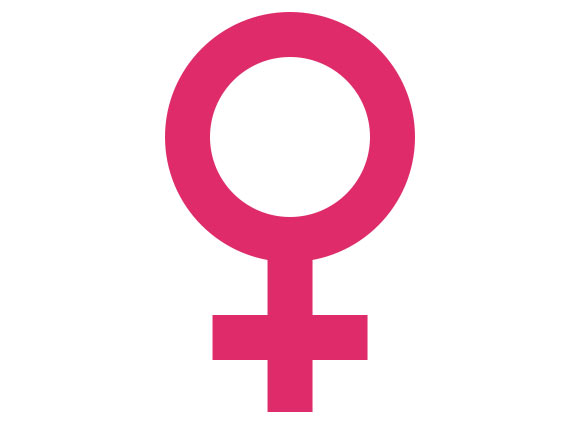


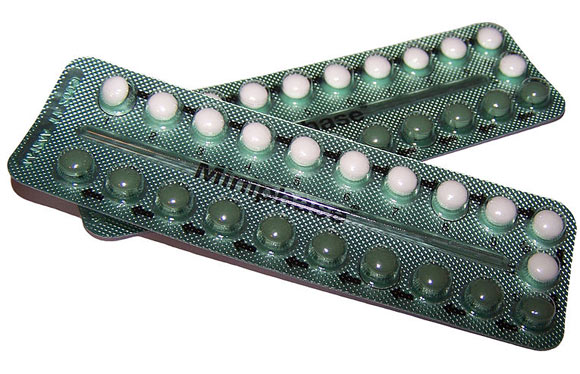
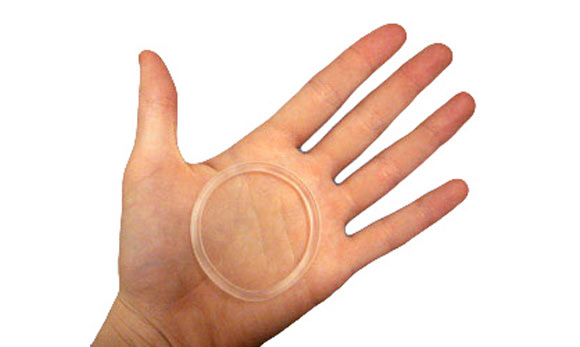
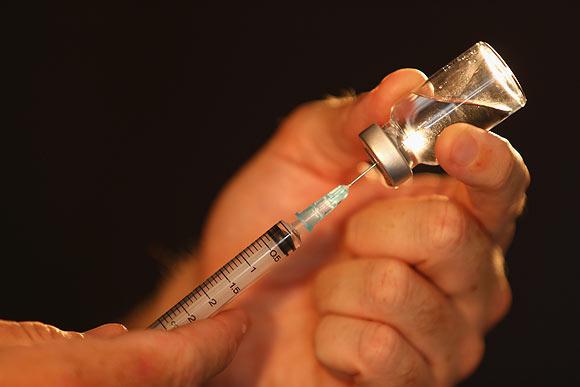

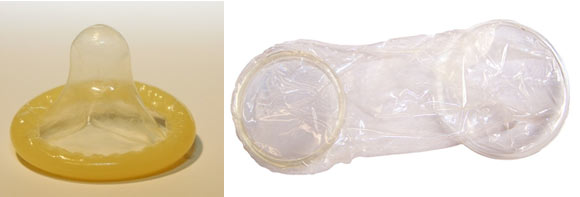



Comment
article